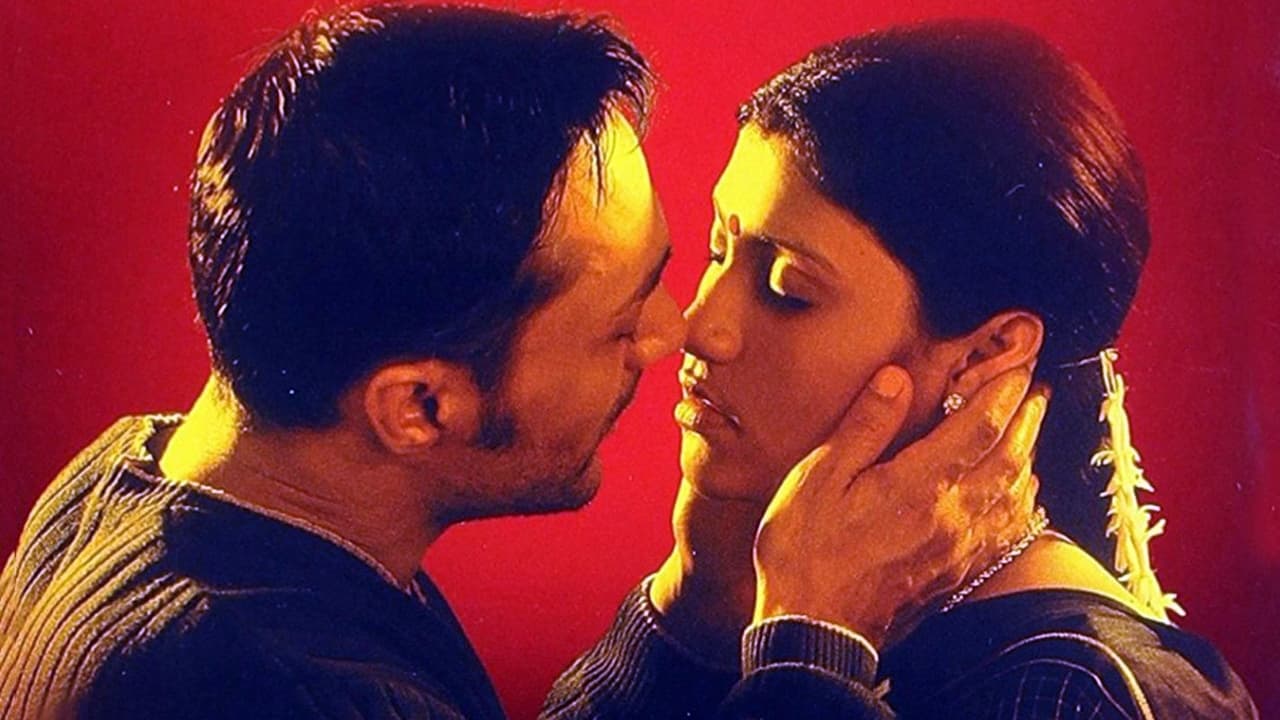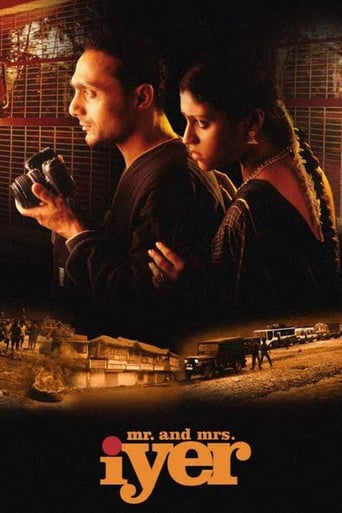

The story starts of in the setting of an ultra conservative Hindu mother with child and a Muslim photographer who happen to have mutual acquaintances from which emerges a passing commitment of the photographer to ensure that the mother and child arrived at their destination safely.The bus ride takes place in environs which are struck by Hindu-Muslim riots, but the riots are only external manifestations of the prejudices that the young Tamil Brahmin woman has grown up with. Aparna Sen is masterful in her craftsmanship where it is hard to tell what is external and what internal.The movie is just as easily about the simple, insidious impulsion of being attracted to someone, slowly overpowering the prejudices that might have repelled them. Delicate mastery of the director in the restrained and therefore far more profound attraction between the two characters.Other comments have called Aparana Sen as one of India's finest women directors...If this film is to be adduced as evidence, she is simply one of India's finest directors!!!
... View MoreTruly amazing.....These are the words which explain the least about this movie. It draws you quite a long into thought about various possible human emotions. Some of the most horrifying scenes based on communal riots are pictured for this movie. Similarly, the most unforgettable romantic scene for me, is from this movie.When I saw the movie for the first time, I was shocked to see the astonishingly natural portrayal of the actors and the sequences. Rahul Bose and Konkana sen gave their best performances till date. Definitely one of the all time best movies produced by bollywood.I strongly recommend this movie to every movie enthusiast.
... View MorePowerful amazing movie, thought provoking. . . A sensitive story of two people. I was not ready for the power and weight of this story - I still get sad and tense - just thinking of the story. Konkona Sen-Sharma and Rahul Bose give such a wonderful performance. I can't relate to the life Raja and Meenakshi Iyer live, or the religious and caste issues, being from USA - the noon's and customs - I . . . well I was NOT ready for how powerful this story is. Amazing. The feel of the story as it unfolds is so special. There are none of the standard movie clichés to distract you. The pace of the story is flawless. For me the subtitles are clear and don't interfere with the scenes. A warning, for most Americans, would be the realistic and almost frighting violence. As I treasure this story, I of course hope you see it once at least. Oh, being a Bollywood movie - there is NO singing or dancing - if that tips the scale against Bollywood for you this is the movie for you.
... View MoreHindu - Muslim riots in the movie is merely the backdrop. People who have commented here just see it as a yet another attempt to take advantage of western perception of India. Sorry, it seems you have completely missed the point. The point tries to make a case between love and honor. And this is India, married women do not indulge (more often that not) in to extra marital affairs. So there is dilemma in the Minds of Raj and Meenaxi. Meenaxi who reluctantly fall in for Raj and Raj who understands it but is bound by his honor. Their relation is platonic and full marks to Aparna for keeping it so because by making it controversial she could have reaped more benefits at the box office.Well certain someone said that the act by the leads had not been put up properly. Konkana Sen Sharma got national award for her debut. People need to realize that she is a bong. Unlike west we don't not only have different dialects but entirely different languages. And the dialect is also extremely different. Which is why the performance is really really mind blowing, especially from the leads. Rahul Bose give a completely restrained performance. Aparna keeps is subtle. She is the greatest women director or may be probably the only who can carry of the subject like this. Kudos!
... View More